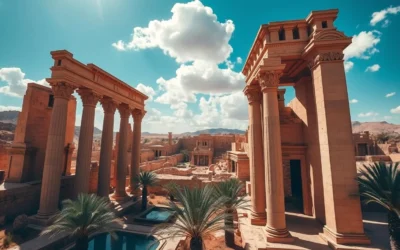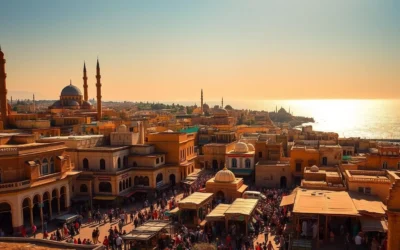✓ Accommodations ✓ Flights ✓ Rental Cars
Imagine a city where ancient history meets Mediterranean charm, and the warmth of the Libyan people welcomes you to explore its rich heritage. Tripoli, the capital city of Libya, is a treasure trove of historical landmarks, cultural experiences, and unforgettable adventures.
With a history dating back to the 7th century BC, when it was founded by the Phoenicians, this North African gem offers a unique glimpse into the civilizations that have shaped the Mediterranean world. As you wander through the city, you’ll discover Roman ruins, Ottoman architecture, and vibrant markets that showcase its rich cultural tapestry.
As you plan your travel to this fascinating city, get ready to navigate through a city with a complex history, but one that is sure to leave you with lifelong memories. With this comprehensive guide, you’ll be able to explore the city’s top attractions and experience the warm hospitality of the Libyan people.
Discovering Tripoli: Libya’s Historic Capital
As you step into Tripoli, you’re immediately immersed in a world of ancient tales and cultural heritage. This historic city, with its complex past and vibrant present, offers a unique travel experience that blends the old with the new.
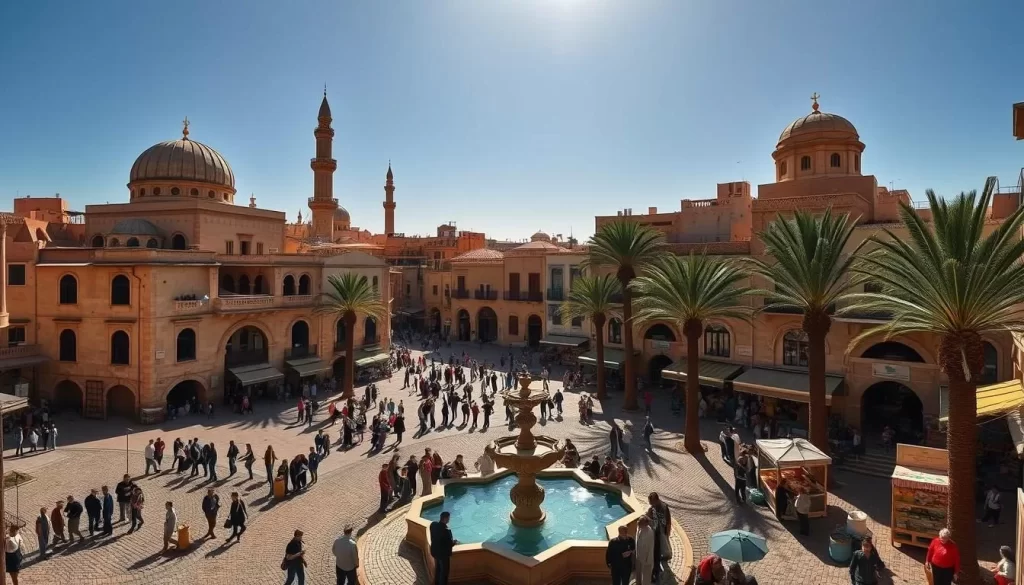
A Brief History of Tripoli
Tripoli’s history dates back to the 7th century BC, with various civilizations having left their mark on the city. From the Phoenicians to the Romans, and later the Ottomans, each era has contributed to the rich tapestry of Tripoli’s cultural identity. Understanding this history enhances your experience as visitors explore the city’s landmarks.
Why Visit Tripoli Now
Now is an exciting time to visit Tripoli. After years of limited tourism, the city is rebuilding and reopening to international visitors. With the 2024 update allowing travel to both Western and Eastern parts of Libya, travelers can now explore more of this historic country with a valid visa. This guide will help you navigate the current travel situation and make the most of your trip.
| Benefits of Visiting Tripoli Now | Description |
|---|---|
| Fewer Crowds | Experience Tripoli’s historical sites without the crowds common in other Mediterranean destinations. |
| Authentic Cultural Experiences | Enjoy warm hospitality and authentic cultural interactions that make your visit memorable. |
| Positive Impact on Local Communities | Your visit contributes to the local economy and supports the gradual return of tourism. |
Exploring the Red Castle (Assai Al Hamra)
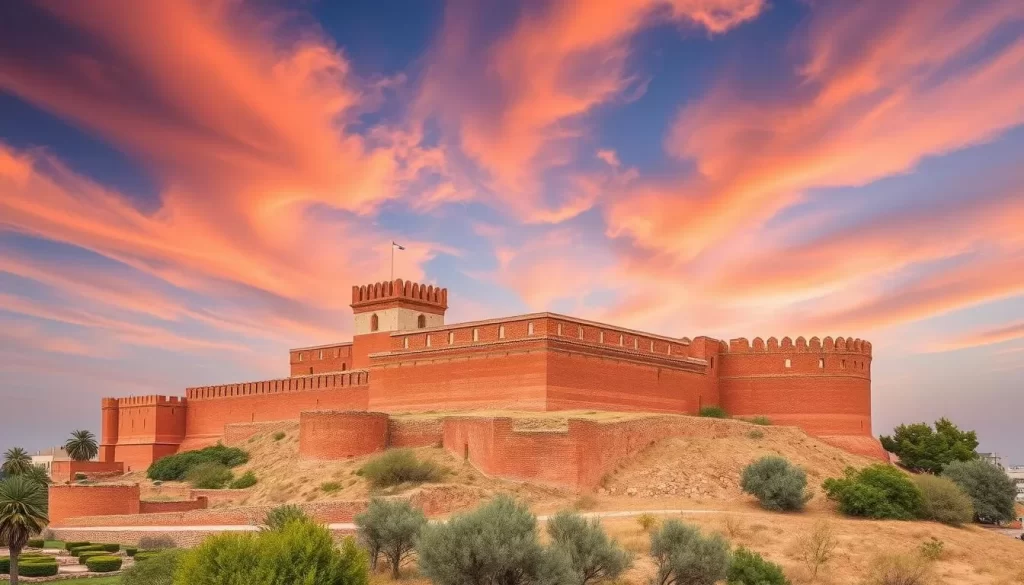
Tripoli’s Red Castle, also known as Assai Al Hamra, is a fascinating site that offers a glimpse into Libya’s rich past. As you explore this historic fortress, you’ll discover a complex that houses various statues, wellsprings, and a wide yard, making it a unique place to experience the country’s history.
The Historical Significance
The Red Castle is a significant historical landmark in Tripoli, Libya, with a history that spans multiple periods, including the prehistoric, Phoenician, Greek, Roman, Byzantine, and Islamic eras. As visitors, you’ll appreciate the site’s importance and the role it has played in shaping the region’s culture and identity. The complex has been well-preserved, allowing you to have a meaningful experience.
What to See Inside the Complex
Inside the Red Castle complex, you’ll find the Tripoli Archaeological Museum, which is home to a diverse collection of artifacts from various historical periods. As you navigate through the complex, you’ll see various courtyards, gardens, and architectural details that showcase different historical influences. Some of the key attractions include:
- Navigate through the extensive Red Castle complex with our guide to its most impressive features and hidden corners.
- Explore the Tripoli Archaeological Museum housed within the castle walls, home to some of Libya’s most precious historical artifacts.
- Marvel at the diverse collection spanning prehistoric times through the Roman and Islamic periods, offering a comprehensive overview of Libya’s rich past.
- Discover the castle’s various courtyards, gardens, and architectural details that showcase different historical influences.
By visiting the Red Castle, you’ll gain a deeper understanding of Libya’s history and cultural heritage, making for a memorable experience at this significant site.
Wandering Through Tripoli’s Ancient Medina
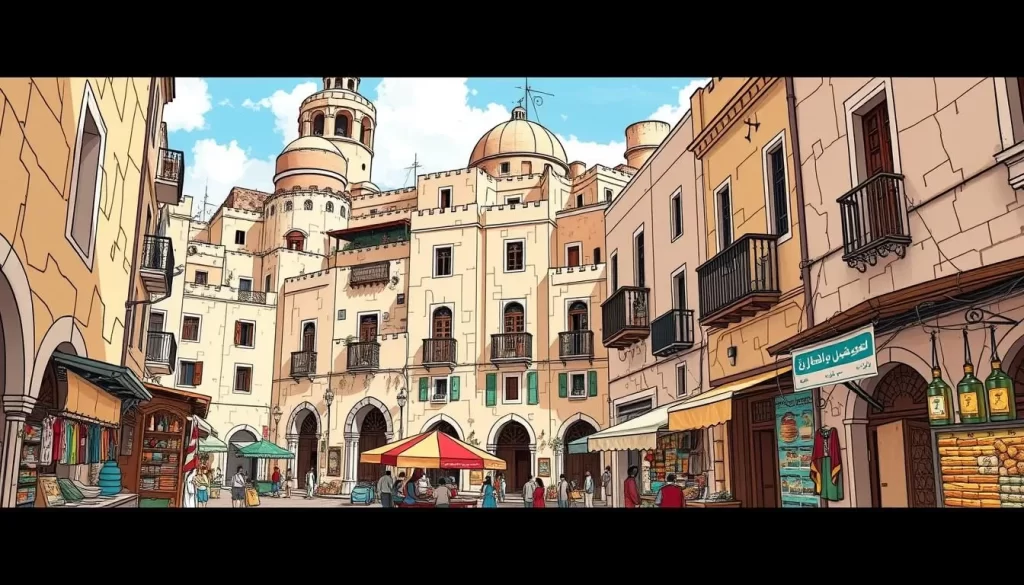
As you step into Tripoli’s ancient Medina, you’re immediately enveloped in a world of history and vibrant culture. The Medina is the heart of the old town, where centuries-old traditions continue to thrive.
Navigating the Narrow Alleyways
The narrow alleyways of Tripoli’s Medina are a maze of fascinating sights and sounds. As you navigate through these historic paths, you’ll encounter people going about their daily lives, adding to the authentic atmosphere of the area. The alleyways are lined with ancient architecture, telling stories of the city’s rich past.
Shopping in the Traditional Souks
Shopping in the traditional souks of Tripoli’s Medina is an experience like no other. You can find a variety of unique items, from spices and textiles to local crafts, making it an ideal place to pick up souvenirs or gifts. The souks offer a vibrant shopping experience where you can engage with local merchants and learn about their trading traditions.
- Immerse yourself in the vibrant atmosphere of Tripoli’s traditional souks, where centuries-old trading traditions continue to thrive.
- Learn about the different specialized markets within the Medina, from the gold souk to the spice markets and textile bazaars.
- Discover unique Libyan handicrafts and souvenirs that reflect the rich cultural heritage of the region.
- Master the art of haggling with local merchants, an expected and enjoyable part of the shopping experience.
- Engage with the friendly local people who bring these historic marketplaces to life with their stories and traditions.
- Sample local delicacies and street food as you explore the culinary offerings of the Medina.
- Understand how these traditional markets remain vital to the economic and social fabric of the old town.
Marveling at the Arch of Marcus Aurelius
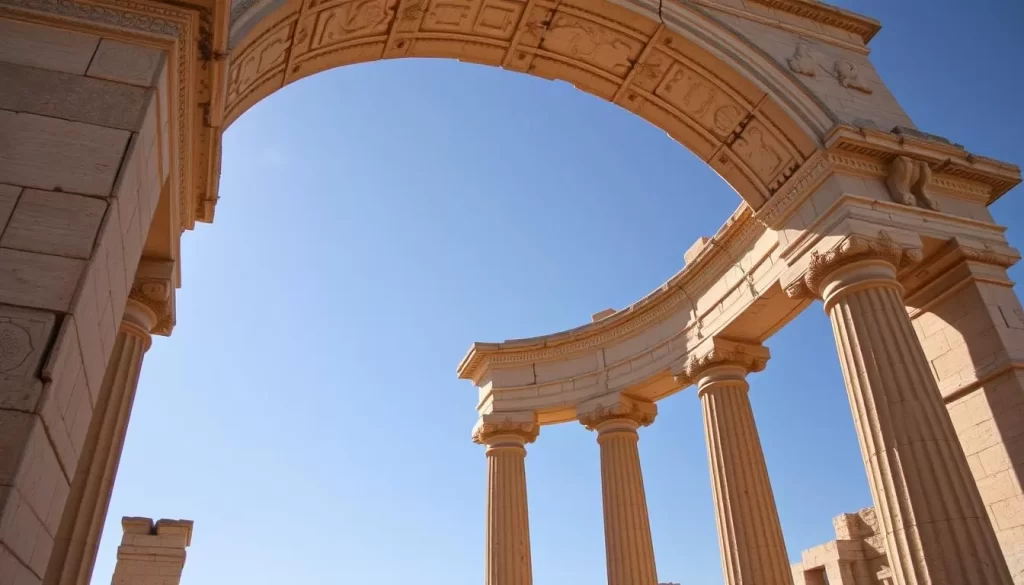
The Arch of Marcus Aurelius is a testament to Tripoli’s rich history, standing proudly in the heart of the city. This ancient Roman arch is one of the city’s most significant landmarks and a must-visit site for history enthusiasts.
Roman Heritage in North Africa
The Arch of Marcus Aurelius is a remarkable example of Roman architecture in North Africa. Erected in 163 AD, it commemorates the victories of Emperor Marcus Aurelius and his adoptive brother, Lucius Verus. As visitors explore this monument, they gain insight into the region’s historical significance during the Roman era.
Photography Tips for the Arch
Capturing the Arch of Marcus Aurelius through photography can be a rewarding experience. The best time to take photos is during the golden hour when the Mediterranean sunlight casts dramatic shadows, highlighting the arch’s intricate details. Experimenting with different angles and views will help you obtain unique shots that showcase the monument’s beauty.
Visiting the Gurgi Mosque: Ottoman Elegance

As you explore Tripoli, a visit to the Gurgi Mosque is a must to experience Ottoman grandeur. This historic mosque is not only a significant religious site but also a cultural landmark that reflects the city’s rich history.
Architectural Highlights
The Gurgi Mosque is renowned for its stunning Ottoman architecture. Visitors can admire the intricate designs, majestic domes, and minarets that characterize Ottoman elegance. The mosque’s design is a testament to the cultural exchange and architectural innovation of the Ottoman era.
Visitor Etiquette and Tips
When visiting the Gurgi Mosque, it’s essential to respect local customs. Dress modestly: women should cover their hair, shoulders, and knees, while men should wear long pants. Remove your shoes before entering the prayer hall. A guide can help navigate the cultural and religious protocols, ensuring a respectful visit. Interacting with the local people can enrich your experience, and understanding the mosque’s significance to the local culture will deepen your appreciation.
Tripoli, Libya: Best Things to Do for History Buffs
For history enthusiasts, Tripoli offers a plethora of exciting experiences that delve into the rich history of Libya. The city’s historical significance is evident in its numerous archaeological sites and landmarks.
The Tripoli Archaeological Museum
The Tripoli Archaeological Museum is a must-visit for anyone interested in Libya’s past. The museum houses a vast collection of artifacts that tell the story of the region’s diverse cultural heritage, from ancient civilizations to the colonial period. You can explore exhibits that showcase the Roman ruins found throughout Libya, providing insights into the country’s strategic importance in the ancient world.
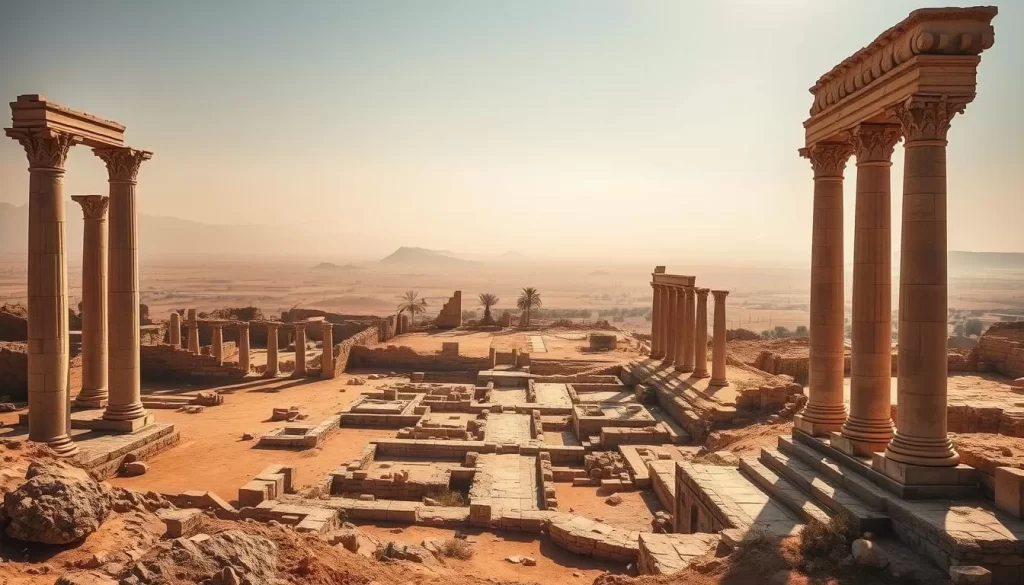
Uncovering Libya’s Ancient Past
Beyond Tripoli, the country is home to numerous historical sites that complement what you can see in the city. Libya’s strategic position in North Africa made it a crossroads of civilizations, from the Phoenicians and Greeks to the Romans and Byzantines. By exploring these sites, you can gain a deeper understanding of how various civilizations have shaped Libya’s cultural landscape.
Modern archaeological techniques are continually uncovering new information about Libya’s historical ruins and ancient settlements, offering a fascinating glimpse into the region’s rich history.
Day Trips from Tripoli: Leptis Magna and Sabratha
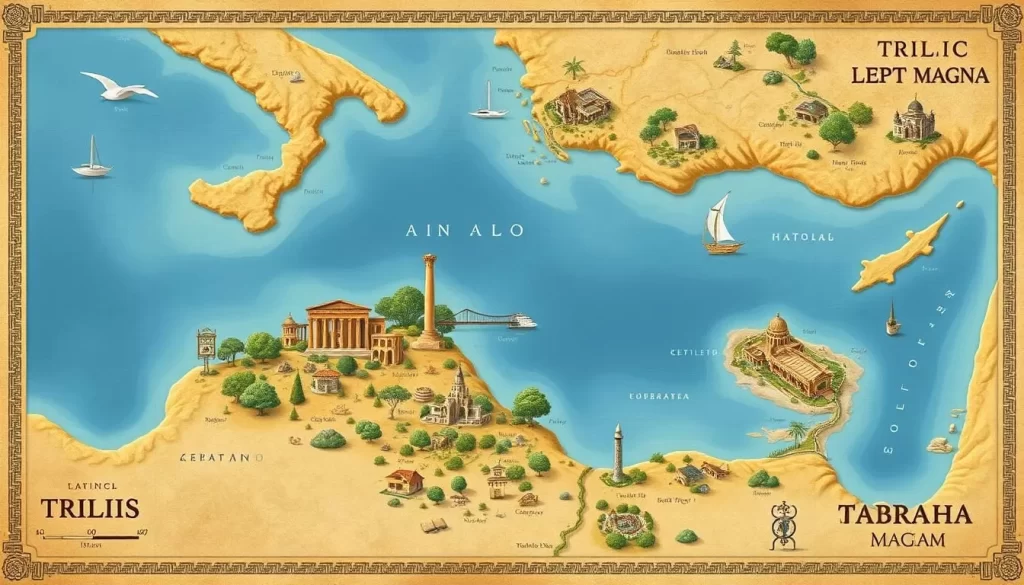
For those staying in Tripoli, day trips to Leptis Magna and Sabratha offer a glimpse into the region’s rich history. These ancient sites are a testament to Libya’s cultural heritage and its significance in the ancient world.
Exploring the Roman Ruins of Leptis Magna
Leptis Magna is one of the best-preserved Roman sites in the Mediterranean, making it a must-visit destination. As a UNESCO World Heritage site, it boasts an impressive array of ruins, including a theater, amphitheater, and forum. You can explore the remains of this once-thriving Roman town and appreciate its strategic coastal location.
The Ancient Theater of Sabratha
Sabratha, another remarkable day trip destination, is renowned for its exceptionally well-preserved 3-story Roman theater. Established by the Phoenicians in 500 BC, Sabratha later became an important Roman trading port. The site offers fascinating views into ancient religious practices through its temples dedicated to Isis, Serapis, and Liber Pater. You can appreciate the beautiful mosaics and architectural details that have survived the centuries.
Experiencing Local Libyan Cuisine
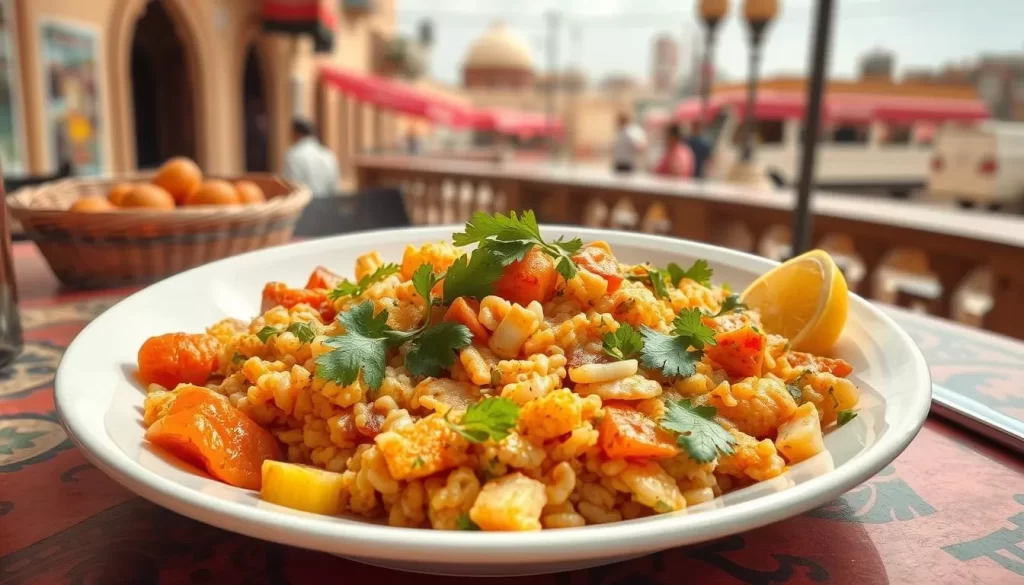
As you wander through the historic streets of Tripoli, the flavors of Libyan cuisine await your discovery. The city offers a rich culinary experience, blending traditional Mediterranean flavors with local ingredients.
Must-Try Dishes in Tripoli
When in Tripoli, be sure to try some of the local specialties. Couscous is a staple dish, often served with vegetables and meat. You should also sample some of the local pastries and desserts, which are sweet and delicious.
Best Restaurants and Cafés
Tripoli is home to a variety of dining options, including Italian-influenced restaurants like Caffe di Roma. This city guide will help you navigate the best places to eat, from traditional Libyan eateries to modern café culture. Whether you’re looking for a meal with a view of the Mediterranean or a taste of local cuisine in this North African town, you’ll find it in Tripoli during your travel.
Practical Travel Information for Visiting Tripoli
Before embarking on your journey to Tripoli, understanding the basics of travel to this historic city is crucial. As you prepare for your trip, several factors come into play to ensure a smooth and enjoyable experience.
Safety Considerations and Current Situation
When traveling to Tripoli, it’s essential to stay informed about the current situation. Check the latest travel advisories from your government and register with their travel registration service if available. Staying updated will help you navigate any challenges that may arise during your trip.
Visa Requirements and Entry Information
Understanding the visa requirements for Libya is a critical step in planning your trip. Depending on your nationality, you may need to obtain a visa before arrival. Research the specific requirements for your country and ensure you have all necessary documents.
Best Time to Visit Tripoli
The best time to visit Tripoli is during the spring (March-May) and fall (September-November), when the weather is pleasant. Be prepared for cold desert nights in winter, with temperatures potentially dropping to 0°C in December and January. Summer can be extremely hot, making sightseeing challenging. Consider the seasonal changes and how they might affect your travel plans and the quality of your views of historic sites.
| Season | Weather Conditions | Travel Tips |
|---|---|---|
| Spring (March-May) | Pleasant temperatures | Ideal for sightseeing |
| Summer (June-August) | Extremely hot | Avoid traveling during peak sun hours |
| Autumn (September-November) | Mild temperatures | Enjoy comfortable sightseeing |
| Winter (December-February) | Cold, especially in the desert | Bring warm clothing for cold nights |

Conclusion: Why Tripoli Deserves a Spot on Your Travel Bucket List
With its ancient ruins, vibrant markets, and warm hospitality, Tripoli is a hidden gem waiting to be explored. As you wander through the city’s historic streets, you’ll catch a glimpse into a rich past that’s preserved in its architecture and cultural practices.
A day trip to Leptis Magna, one of the best-preserved Roman sites in the world, is a must. The experience will leave you in awe, and the warm welcome from the locals will make your journey even more memorable for tourists like you.
The desert landscapes surrounding Tripoli offer a stark contrast to its historical sites, making this part of the world a unique destination. Visiting Tripoli allows you to experience a country at the crossroads of cultures, blending African, Arab, and Mediterranean influences.
The above is subject to change.
Check back often to TRAVEL.COM for the latest travel tips and deals.

